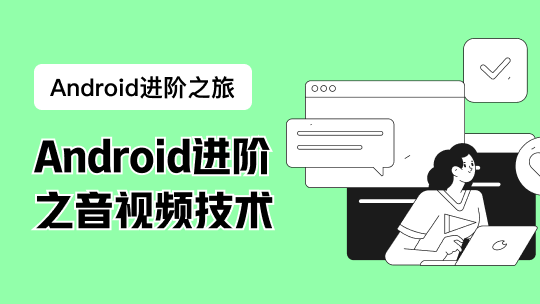[TOC]
1.wordcount
利用socket作为数据源,对输入的每行数据进行单词计数。计算频率为process time的每10秒一次,结果输出到terminal。
object SocketWindowWordCount {
def main(args: Array[String]) : Unit = {
val port: Int = try {
ParameterTool.fromArgs(args).getInt("port")
} catch {
case e: Exception => {
System.err.println("No port specified. Please run 'xx.jar --port <port>'")
return
}
}
val env: StreamExecutionEnvironment = StreamExecutionEnvironment.getExecutionEnvironment
val text = env.socketTextStream("localhost", port, '\n')
val windowCounts = text
.flatMap(_.split("\\s"))
.map(WordWithCount(_,1))
.keyBy(_.word)
.window(TumblingProcessingTimeWindows.of(Time.seconds(10)))
.sum("count")
windowCounts.print()
env.execute("Socket Window WordCount")
}
case class WordWithCount(word: String, count: Long)
}
数据格式
case class SensorReading(id: String, timestamp: Long, temperature: Double)
object SmokeLevel extends Enumeration {
type SmokeLevel = SmokeLevel.Value
val High, Low = Value
}
case class Alert(message: String, timestamp: Long)
2.双流警报EventTime
时间特征为event time,每1s更新一次watermark,watermark由SensorReading内部的timestamp推进,允许5s的延迟(过滤掉迟到数据)。数据源SensorReading并发处理,数据源SmokeLevel并发度为1,但能够被每个并发的SensorReading流访问。假设两个流的数据是源源不断的。当SensorReading的temperature大于100且SmokeLevel为High时触发警报。警报包含当时SensorReading的timestamp。
下面例子,迟到数据,即数据晚于WM依然会被处理
注意:如果某个流在connect前assignTimestampsAndWatermarks,connect后的流是不会更新WM的。
def main(args: Array[String]): Unit = {
val env = StreamExecutionEnvironment.getExecutionEnvironment
env.setStreamTimeCharacteristic(TimeCharacteristic.EventTime)
env.getConfig.setAutoWatermarkInterval(1000L)
val sensorInput = env
.addSource(new SensorSource)
.assignTimestampsAndWatermarks(
new BoundedOutOfOrdernessTimestampExtractor[SensorReading](Time.seconds(5)) {
override def extractTimestamp(element: SensorReading): Long = {
element.timestamp
}
})
val smokeLevelInput = env
.addSource(new SmokeLevelSource)
.setParallelism(1)
val res = sensorInput
.process(new MyKeyedProcessFunction) // 这里的实现省略,其实就是if和collect
.connect(smokeLevelInput)
.flatMap(new MyFlatMapFunc)
res.print()
env.execute("multiple streamss")
}
class MyFlatMapFunc extends CoFlatMapFunction[SensorReading, SmokeLevel, Alert] {
private private var curSmokeLevel = SmokeLevel.Low
override def flatMap1(value: SensorReading, out: Collector[Alert]): Unit = {
if (curSmokeLevel.equals(SmokeLevel.High) && value.temperature > 100) {
out.collect(Alert("Alert! ", value.timestamp))
}
}
override def flatMap2(value: SmokeLevel, out: Collector[Alert]): Unit = {
curSmokeLevel = value
}
}
3.持续计数stateful + timer + SideOutputs
对每个key的数据量进行累加计数,如果1分钟没有新数据,就输出key-count对。对每一个数据进行处理时,sideoutput当前所处理的key的state数据(更新后的)
val realTimeInfo: OutputTag[String] =
new OutputTag[String]("real-time_info")
def main(args: Array[String]): Unit = {
val env = StreamExecutionEnvironment.getExecutionEnvironment
env.getConfig.setAutoWatermarkInterval(1000L)
env.setStreamTimeCharacteristic(TimeCharacteristic.EventTime)
val countStream = env.addSource(new SensorSource)
.keyBy(_.id)
.process(new MyProcessFunc)
countStream.getSideOutput(realTimeInfo)
.print()
env.execute()
}
case class CountWithTimeStamp(key: String, count: Int, ts: Long)
class MyProcessFunc extends KeyedProcessFunction[String, SensorReading, (String, Int)] {
lazy val state = getRuntimeContext
.getState(new ValueStateDescriptor[CountWithTimeStamp]("muState", classOf[CountWithTimeStamp]))
override def processElement(value: SensorReading,
ctx: KeyedProcessFunction[String, SensorReading, (String, Int)]#Context,
out: Collector[(String, Int)]): Unit = {
val current = state.value() match {
case null =>
CountWithTimeStamp(value.id, 1, ctx.timestamp())
case CountWithTimeStamp(key, count, lastModified) =>
// 删除上一次的timer
ctx.timerService().deleteEventTimeTimer(lastModified + 6000)
CountWithTimeStamp(key, count + 1, ctx.timestamp())
}
state.update(current)
ctx.timerService().registerEventTimeTimer(current.ts + 6000)
ctx.output(realTimeInfo, current)
}
override def onTimer(timestamp: Long,
ctx: KeyedProcessFunction[String, SensorReading, (String, Int)]#OnTimerContext,
out: Collector[(String, Int)]): Unit = {
state.value() match {
case CountWithTimeStamp(key, count, lastModified) =>
if (timestamp == lastModified) out.collect((key, count)) else None
case _ =>
}
}
}
4.一定时间范围内的极值windowfunction + checkpoint
利用tumbling window计算各个sensor在15s内的最大最小值,返回结果包含窗口的结束时间。另外,window只存储极值,不保留原数据。
checkpoint间隔为10s,watermark刷新间隔1s
def main(args: Array[String]): Unit = {
val env = StreamExecutionEnvironment.getExecutionEnvironment
env.getConfig.setAutoWatermarkInterval(1000)
env.setStreamTimeCharacteristic(TimeCharacteristic.EventTime)
env.enableCheckpointing(10 * 1000L)
env.addSource(new SensorSource)
.assignTimestampsAndWatermarks(new MyPeriodicAssigner)
.map(r => (r.id, r.temperature, r.temperature))
.keyBy(_._1)
.window(TumblingEventTimeWindows.of(Time.seconds(15)))
.reduce(
(item1: (String, Double, Double), item2: (String, Double, Double)) => {
(item1._1, item1._2.min(item2._2), item1._3.max(item2._3))
},
new MyWindowEndProcessFunction()
)
}
case class MaxMinTemperature(key: String, min: Double, max: Double, ts: Long)
class MyWindowEndProcessFunction
extends ProcessWindowFunction[(String, Double, Double), MaxMinTemperature, String, TimeWindow] {
override def process(key: String, context: Context, elements: Iterable[(String, Double, Double)],
out: Collector[MaxMinTemperature]): Unit = {
out.collect(MaxMinTemperature(key, elements.head._2, elements.head._3, context.window.getEnd))
}
}













